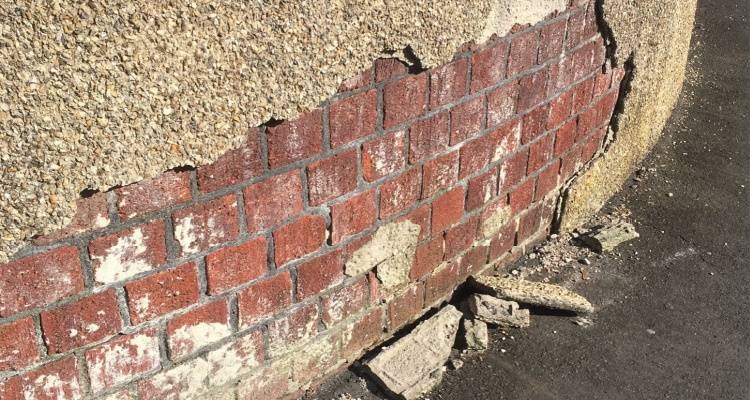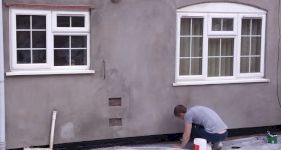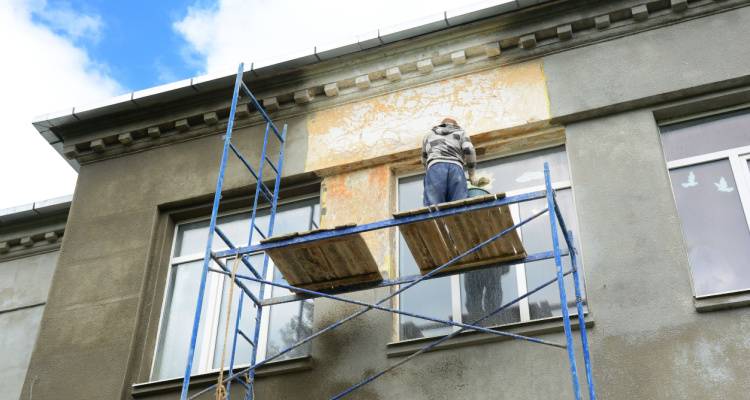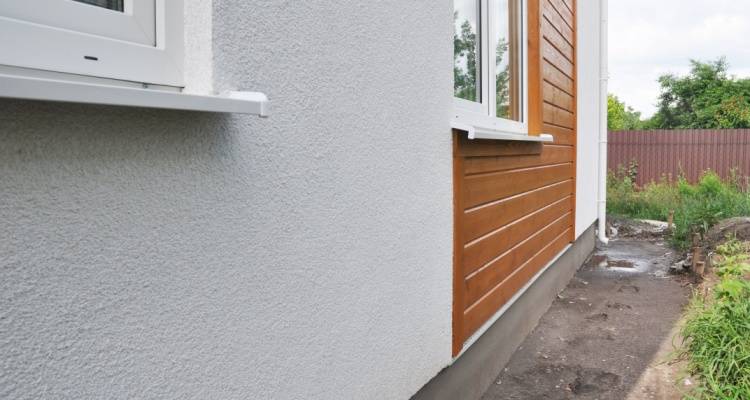Cement Rendering Costs
- The average cost for cement rendering is £4,000
- It will take about 5 days to complete
- A breakdown of pricing information for cement rendering your property
- An overview of what the job entails and the time it should take
- Costs you need to consider
- Information about building regulations and planning permission for cement rendering
Cement rendering is an ideal way to spruce up the exterior of your home and leave it looking fresh and new. It will also add value to your home and make it more attractive to buyers if you are thinking of selling.
Want to know how much it will cost?
Have a look through our guide and find out all you need to know about the costs of cement rendering below!
We can also put you in touch with cement rendering experts in your area so that you can get at least three quotes for the job.
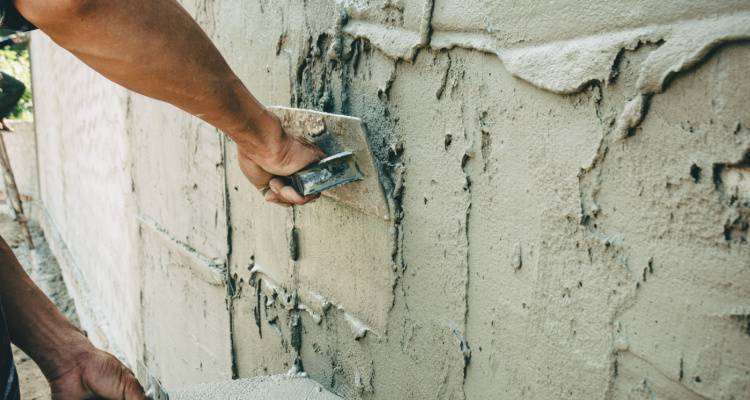
£4,000
Table of Contents
- How Much Does Cement Rendering Cost?
- Types of Cement Rendering
- Additional Costs
- What are the Benefits of Cement Rendering?
- Render Patch Repairs
- Rendering Guarantees
- Are There Ways I Can Reduce the Cost of Cement Rendering?
- How is Cement Rendering Applied?
- Planning Permission and Building Regulations
- Finding a Tradesman to do Your Rendering Work
- FAQs
- Sources
How Much Does Cement Rendering Cost?
You can pay anywhere between £30 to £50 per m², depending on the size of your home and the area you want rendering.
We’ve written this guide with you in mind. We want to give you the most up-to-date information on cement rendering costs so that when the time comes to pick a professional, you’ll know who is quoting a fair price.
Cement Render Prices
The following cement rendering prices include materials and labour fees, and are based on standard size properties within the UK.
| Type of Property | Average Cost | Duration of Job |
|---|---|---|
| Terraced House | £2,640 – £4,400 | 2 days |
| Semi-Detached House | £3,880 – £4,850 | 5 days |
| Detached House | £5,960 – £7,450 | 8 days |
| Bungalow | £3,080 – £3,850 | 6 days |
These cement rendering costs are average prices. The cost of rendering a house will depend on where you live in the UK. Prices in London and the South East are higher than in the North of England or Scotland.
Types of Cement Rendering
Once you have decided to use cement rendering, you can choose between a smooth, textured, or patterned finish.
Smooth Finish
A smooth finish is created in even layers. But a smooth finish will require painting afterwards.
Textured Finish
Textured finishes are popular when using cement render. A textured finish is normally already coloured, and the surface of the render is scraped to remove some of the surface.

Patterned Finish
Patterned finishes are made by hand and often difficult to replicate - adding a unique design to your property.
Additional Costs
There are several other costs you must take into consideration when you decide to cement render your home. Don’t forget to add any extras to your budget.
Removal of Old Render
You must have the old render removed before you apply a new render unless you are going to apply external wall insulation. Have a look at the costs of removing old rendering in the chart below:
| Type of Property | Average Cost | Duration of Job |
|---|---|---|
| Terraced House | £1,500 – £3,000 | 1 day |
| Semi-Detached House | £3,000 – £5,000 | 2 days |
| Detached House | £5,000 – £8,000 | 3 to 4 days |
| Bungalow | £2,000 – £4,000 | 1 to 2 days |
Scaffolding Installation
Scaffolding will likely be required to remove and renew the cement render. The cost of hiring scaffolding usually starts at around £20 to £25 per m², although this may vary in more expensive areas such as London and the South East.
Hiring scaffolding for a week will normally cost between £200 and £800, depending on the size of your property and the amount of scaffolding needed, likewise your location can also impact the final quote.
Repairing Brickwork
If your brickwork is in poor condition after removing old render, you may need to budget for the additional cost of repointing brickwork (averaging £23–£47 per hour or £45–£60 per m²) as well as replacement bricks. New bricks typically cost between £0.82 and £0.96 per brick, while handmade or reclaimed options can be more expensive.
Skip Hire
Removing old rendering and repairing brickwork will require the additional task of waste removal. In the event the cost of the relevant sized skip hire isn't already included within your quote, then expect to pay around £200 for a small 6-yard skip, although London rates tend to be much higher.
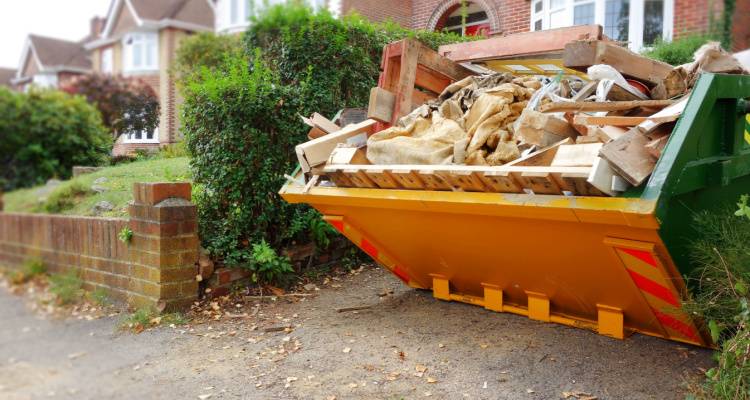
Alternatives to Cement Rendering
If you want to have your exterior walls insulated, you might have to use a different type of render. Here are some suitable alternatives to cement rendering:
What are the Benefits of Cement Rendering?
There are several benefits to installing cement rendering:
- Protects and extends the life of exterior walls
- Can help improve energy efficiency, reducing heating costs
- Enhances the look of your home, potentially increasing its value
- Provides a durable and low-maintenance finish to your property
Render Patch Repairs
If you don’t need to renew your render, then it is possible to carry out patch repairs. The most common types of render repair are to make good cracks that have appeared in the render or to re-paint discoloured parts.
If you notice cracks appearing in the render, then it’s important to fix them as soon as possible. Cracked render can let in water, which will cause damp and mould.
The only disadvantage to making repairs is the colour match. Your repair might be a slightly different colour to the original render, but the benefits of repair outweigh the aesthetics in this case.
A tradesperson will charge between £15 and £30 per m² to repair the damaged render, so the total cost will depend on the amount of render that needs fixing. Painting discoloured render will cost, on average, £20 per m².
Rendering Guarantees
Most manufacturers will supply a guarantee or warranty with their product as long as it has been applied correctly. Some manufacturers will give a crack-free guarantee for several years.
But, the product must be purchased directly from the manufacturer and applied by an approved contractor in most cases.
Are There Ways I Can Reduce the Cost of Cement Rendering?
If you are a competent DIY enthusiast, you may want to tackle the entire project yourself. But you will need the time, energy, materials and tools. Hire charges for scaffolding and skip hire won’t change because you are doing the work yourself. But you could save between £1,500 and £8,000 by removing the old rendering on your property. You could also get a discount from a tradesperson if you assist them with the work.
Rendering your property does take skill and experience, so we recommend that you hire a professional for the job. If you feel you can tackle it, though, then you’ll save money on labour costs. You’ll still need to pay for materials, tool hire, scaffolding and/or skip costs.
The cost to cement render a house depends on the size of your property. But to buy cement render mix, you’ll be looking at costs between £10 and £15 per m². The table below calculates the average cost of materials for sand and cement combined.
| Type of House | Average Cost |
|---|---|
| Terraced | £880 – £1,320 |
| Semi-detached | £970 – £1,455 |
| Detached | £1,490 – £2,235 |
| Bungalow | £770 – £1,155 |
This is the average cost for cement render mix, which you can buy ready mixed. But you can also buy concrete and sand separately. Some building material shops will provide a discount for bulk buying, which can reduce the price.
How is Cement Rendering Applied?
When applying cement rendering, the following steps need to be followed:
- Prepare the wall by removing damaged mortar or old render, then brush off dust and debris.
- Mix render with water to the correct consistency as per the instructions.
- Apply the first coat using a rendering machine or trowel, starting from the bottom and working upwards.
- Allow the first coat to dry for a few hours before applying the second coat.
- Finish with a smooth, even surface and leave the render to fully dry.
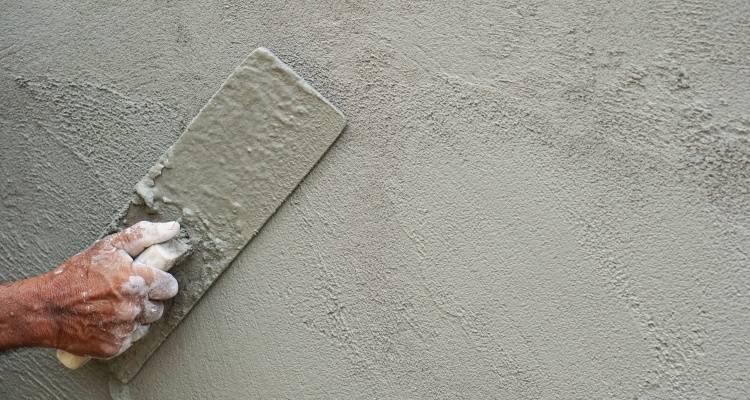
Planning Permission and Building Regulations
Planning permission isn’t generally required unless the cement rendering significantly changes the appearance of your property. The exception being if you live in a conservation area or have a listed building, in which case you will need to apply for planning permission regardless of the extent of the work being carried out.
If you are applying new cement rendering or re-rendering 25% or more of the total exterior wall area of your property, building regulations may apply. This is because exterior walls must meet specific U-value requirements for insulation, and if your walls do not meet these standards, additional insulation will be required.
The best way to receive up-to-date information about building regulations is to visit the appropriate department at your local council offices. Explain what you want to do to your home, and they will advise you whether or not building regulations apply in your case.
If building regulations do apply, the council staff will let you know what needs to be done and if there are any fees you need to pay. They will also give you the forms to fill out.
Finding a Tradesman to do Your Rendering Work
If you log in to our website, you can enter your postcode and then tell us the type of tradesperson you need and answer some questions about the job you want to do. You’ll then get up to 3 quotes from tradespeople in your area. It’s best to get 3 quotes so that you can compare each one.
When you speak to the rendering specialists, ask them if they have a website or photographs of work they have completed. Reading customer feedback will also help you to make a decision.
It’s also important to ask a few questions. First of all, find out if the contractor has any experience rendering properties. It may be a new company with a person fresh from training, so this is worth finding out.
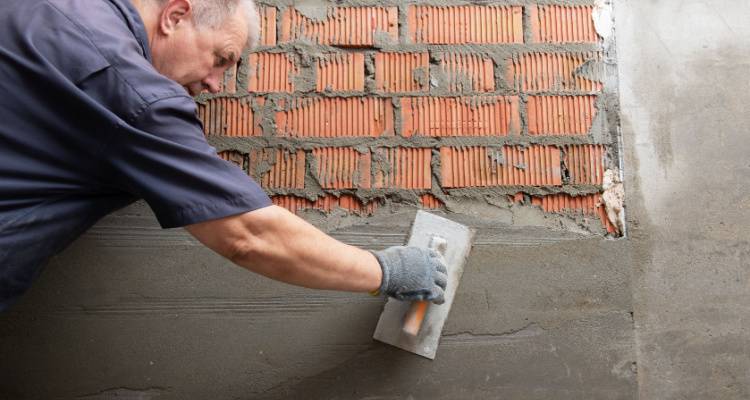
Ask them if they arrange for scaffolding and/or skip hire or if you’ll need to organise this yourself. Also, ask the contractor if they possess third-party liability insurance. If they do, it means that both the contractor and you will be protected if any accidents occur.
The insurance will take responsibility for any claims you make against the contractor in the case of any damage or injury that was caused whilst the rendering work was being carried out.
It’s also an idea to ask how long the job is expected to take and how many people will be involved in the work. If you want to save money by helping the contractor with part of the work, talk to them about this at the quotation stage.
Finally, ask about any guarantees and warranties that come with the rendering work and make sure you are given the documents with the warranty details when the rendering work is complete.


